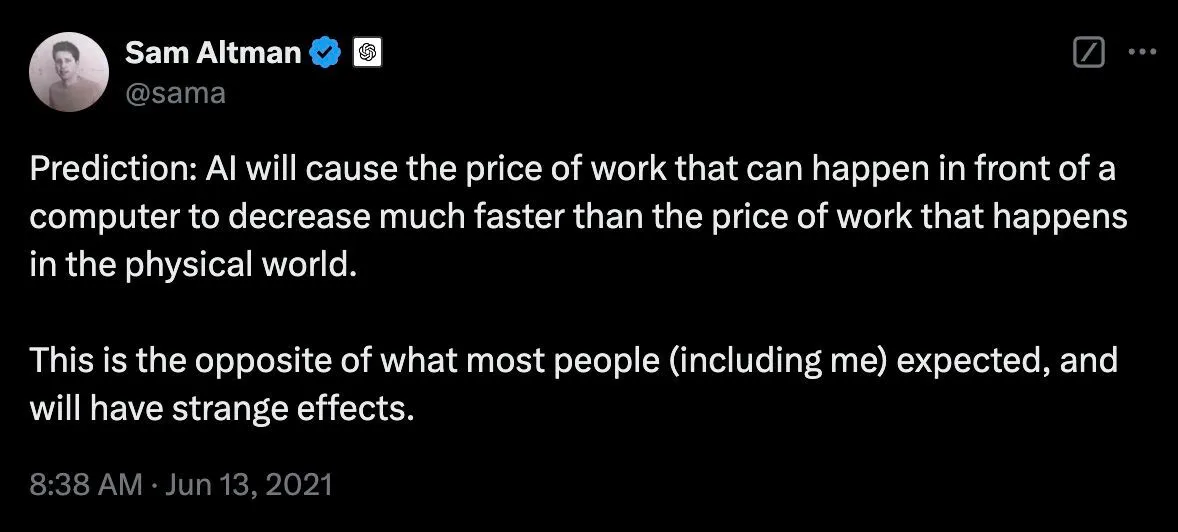
Sign up for daily news updates from CleanTechnica on email. Or follow us on Google News!
Lloyd Alter is someone you should know. He has written more than 16,000 articles about architecture, design, transportation, and planning for Treehugger since 2005. Along the way, he has been a regular speaker or moderator at Passive House conferences in Seattle, Vancouver, New York City, Boston, Vienna, and Munich. He has also spoken about green buildings in Vancouver, Toronto, and Moose Jaw. Prior to getting involved in writing, Alter was a promoter of tiny homes and prefabricated housing, and a presenter at conferences in Los Angeles, San Francisco, and Austin. He has worked as a real estate developer, building condominiums in Toronto, Canada, and as an architect. Lately, he has become involved with the AI craze because of his teaching duties.
Currently, Alter is teaching Sustainable Design to students at the School of Interior Design in Toronto and other students from “The Creative School” at Toronto Metropolitan University. In addition, he writes regularly on Substack, which is where I discovered him a few months ago. Last summer, I wrote a story about the current state of the Passive House movement in which Alter was mentioned prominently. The article annoyed him a great deal because I confused him with a new CleanTechnica reader by the name of Larry Evans. Although I apologized profusely for my error, I’m not sure he has completely forgiven me (or even knows who I am).
Nevertheless, I still subscribe to his Substack account, where this week he has elected to address the thorny issues surrounding the AI circus, which seems about to consume every electron we can generate and every scrap of information available anywhere on the internet to give us … what, exactly? We don’t know and few seem to care. It’s the new, new thing and we all gotta have it, no matter what it costs. We don’t need electric cars because they are affected by the cold, but we need AI in our lives … because? Microsoft has just announced it will spend $80 billion to build new AI-capable data centers this year. If Microsoft is doing that, it must be worthwhile, right?
Alter is not so sure. He is concerned his students are using AI to complete their assignments but learning little by doing so. A colleague has suggested having students do more of the work in class and write their answers out in long hand. “This would be almost impossible in a class of 140 students with varying abilities to speak and write English, who are always looking at their phones, and who have terrible handwriting. I don’t know if they or I could cope,” he says.
Smash Your Machines!
“Maybe I should be insisting that they get radical and fight the trend to AI,” Alter muses. “It is a power sucking monster that is going to eat their jobs. It probably already is nibbling on them — why hire an interior designer when you can just upload a photo and have the AI do it? Why pay for a photo when you can use DALL-E and make your own image?” I must remember to ask Michael Barnard that question at the next CleanTechnica crumpet and cauliflower soirée. Brian Merchant, writing in his Blood in the Machine Substack blog, said recently, “It’s clear now that generative AI is being used to undermine and eliminate creative jobs, that AI slop is enshittifying the internet, that a new regime of software automation — that next to no workers asked for — stands to profit power at workers’ expense.”
“I am one of the thousands of laid-off writers who worked for the kind of websites that now publish a lot of AI slop,” Alter says. “The interior designs shown on the PromeAI site are interior slop. A Bluesky buddy wrote this morning, ‘Enshittification is so 2024, enslopification is the theme for 2025,’ and he’s right. Slop is cheap and good enough for many people, so we probably will need fewer interior or fashion designers or photographers — definitely fewer journalists — and we will get paid a lot less.” That last part hits me right where I live.

Canadian futurist Chris Holland recently wrote a LinkedIn post discussing that 2021 tweet by Sam Altman. “In reality, this means that soon your computer job will be worth less than working in the kitchen at McDonalds. Of course, the price paid for that job won’t change at all, so we’ll have people with 30 years of experience built off of 4-8 years of education living out of their cars, making minimum wage, while a good 30-40% of the population crawls into a ditch and dies due to being inconvenient.”
In his book Living the 1.5 Degree Lifestyle, Alter says he wondered why all these increases in productivity from computers, technology, and now artificial intelligence were not leading to a 15-hour work week and more leisure time and income for workers, as was predicted by John Maynard Keynes, who wrote:
“According to Benjamin Friedman, it’s because of inequality. Basically, all the gains from the increases in productivity went into the pockets of the rich. He quotes economist James Meade, writing in 1965, discussing how having more time would have the opposite effect:
“Meade instead thought ‘wages would thus be depressed,’ as ever less labor was necessary for production. Correspondingly, an ever greater share of total income would go to the owners of the machines. In the absence of government-provided welfare on a massive scale, therefore, most of the workforce would be compelled to take whatever low-paying jobs they could get, presumably in the service of the machine-owners but not working with the machines. In Meade’s vision, ‘we would be back in a super-world of an immiserized [impoverished] proletariat of butlers, footmen, kitchen maids, and other hangers-on.’”
Toronto Metropolitan University was founded in 1948 as the Ryerson Institute of Technology “to address post-war demands for skilled tradespeople. The institute initially focused on training in skilled trades such as architecture, costume design, and photography.” These are all under threat, Alter says. “In the course of writing this, I have come to the conclusion that my students should raise their hammers and smash the machines. They should reject AI tools that take their words and ideas to train the model, which then gets regurgitated as AI slop. They should, as Merchant puts it, ‘continue to refuse the technologies of exploitation.’ They must realize that every time they use these technologies, they are contributing to their own career demise.”
GIGO
I have a friend who lives in northern Vermont. As it gets pretty cold there this time of year and there is not much to do outdoors, he spends his time having conversations with a computer via AI. He sends me the transcript from time to time to show me how brilliant AI can be at answering the questions he poses. That was until recently, when he got interested in an article I did about how the Wall Street Journal is flogging the fossil fuel lie that renewable energy is driving up the price of electricity in many locations. To his dismay, AI basically agreed with what the WSJ had to say, so now he has embarked on a campaign to train AI so it gets the right answer — or at least the answer he prefers. As they say in the world of computers — GIGO — which stands for “garbage in, garbage out.”
I offer this as an example of the AI fallacy and suggest it tells us only what we want to hear. It’s a form of confirmation bias that threatens to replace our own thinking with a bunch of made up claptrap. The results could be catastrophic for humanity. What we need is more actual intelligence and less artificial intelligence. It’s like the difference between cheese and artificial cheese food. It may look the same, but it’s not even close.

Chip in a few dollars a month to help support independent cleantech coverage that helps to accelerate the cleantech revolution!
Have a tip for CleanTechnica? Want to advertise? Want to suggest a guest for our CleanTech Talk podcast? Contact us here.
Sign up for our daily newsletter for 15 new cleantech stories a day. Or sign up for our weekly one if daily is too frequent.
CleanTechnica uses affiliate links. See our policy here.
CleanTechnica’s Comment Policy




